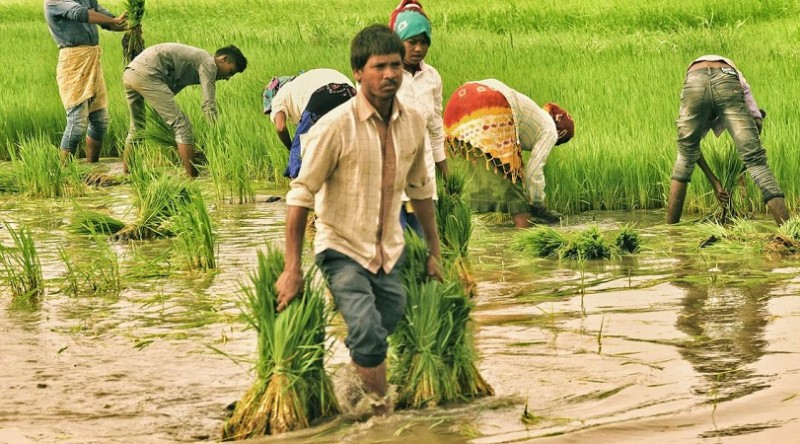
KOLKATA: This year, West Bengal has noticed an odd impact of climate change, with the state's granary belts experiencing an unusual pattern of rainfall.
First, this year's peak months for seeding Aus and Aman paddy, June and July, saw a significant shortage in rainfall throughout the granary belts, particularly in south Bengal. Then it saw unusually heavy autumnal rain in late September and early October. These two whims of nature have had a significant negative influence on the state's paddy production, placing the farmers in a difficult situation.
According to data from the weather office in Kolkata, Gangetic West Bengal saw a 48% rainfall shortfall in June of this year. The region's rainfall deficit decreased slightly in July of this year, but it still remained at about 46%. As per data, Gangetic West Bengal experienced its biggest rainfall deficit since 2010. However, data show that even in 2010, the region's rainfall shortfall was under 40%.
How has the cultivation of Aus and Aman paddy in the state's granary belts been impacted by this severe rainfall deficit? The main sowing season in Australia and Aman was the first affected by this rainfall deficiency, according to agricultural specialists.
With pre-monsoon rains, the Australian variety of paddy is sown in the summer and harvested in the fall. Therefore, the lack of rain in June had an impact on planting because the seed beds did not receive the amount of rainwater needed for a healthy yield.
The sowing season for Aman rice begins in the middle of July and lasts through the middle, and occasionally the end, of August. As a result, a significant portion of the Aman sowing period was also impacted by the rainfall deficit in July, which was roughly 46%.
Statistics from the agriculture department demonstrate how the state's paddy crop was impacted by the whims of nature. Out of the aim of 52 lakh hectares, only 2.08 lakh hectares of cropland could have been used to sow paddy seeds as of the middle of July.
The output of this particular breed of paddy during the current agricultural season is in doubt because just 1.1 lakh of the 2.08 lakh hectares of land were suitable for cultivating Aus paddy. Aman paddy might be planted on 97,000 hectares within the same time frame.
East Burdwan district in South Bengal, regarded as West Bengal's granary, was the area most severely impacted. Only 3,280 hectares in this district could have been sown for Aman paddy, whereas only 1,697 hectares were available for Aus paddy as of mid-July.
However, the rainfall in August partially made up for the rainfall deficiency in the case of Aman paddy. The farming community's hopes had been raised by the appropriate rainfall in August when the excessive autumnal rainfall in September and October arrived. The excess was estimated to be about 10%.
Hannan Mollah and Samar Ghosh, two agricultural specialists and All India Kisan Sabha officials, believe that the double-blow--first in the form of a rainfall deficiency in June and July and then an excess of autumnal rain in September and October--made the farmers lose a significant portion of their harvest.